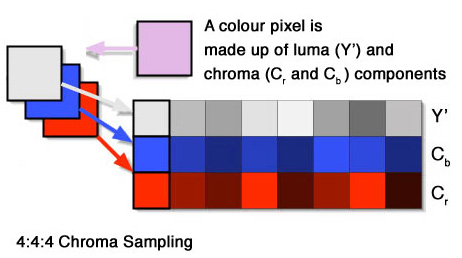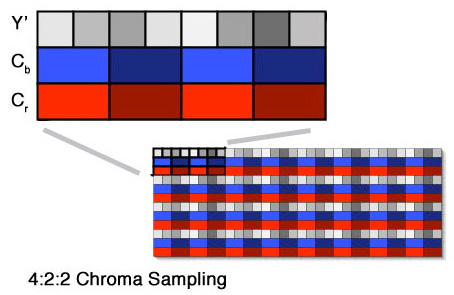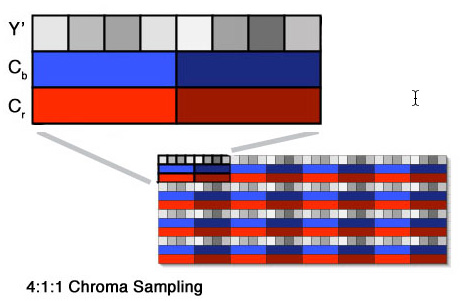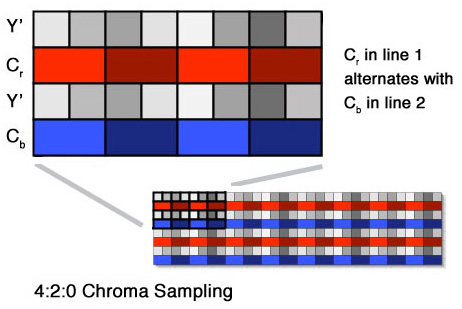[ This article was first published in the March, 2005, issue of
Larry’s Final Cut Pro Newsletter. Click here to subscribe. ]
One of our on-going discussions is the issue of color sampling; which we describe using terms like 4:1:1, 4:2:2, 4:4:4 and, with DVD and HDV, 4:2:0.
And, I thought I pretty well understood what these meant. I should have known better, because someone who DOES know better wrote a nice article illustrating the difference.
Allow me to present Graeme Nattress who wrote a short and highly lucid description of what all the numbers mean. (For those of you who worry about such things, “colour” is the Canadian spelling…)
Color Terminology
Component digital video is often referred to as YUV, but this is not an accurate description of component digital video, but instead refers to a set of intermediate qualities used in the formation of analogue composite video. The correct terminology for the components of digital video is Y’ Cb Cr.
The Y’ represents luma, the ‘ is important, reminding us that it is non-linear (gamma corrected). The Cb and Cr are chroma components that are often wrongly referred to as U and V. The Cb is calculated as B’ – Y’, and Cr is R’ – Y’. If you are interested in more details, check out Charles Poynton’s excellent articles here.
Chroma Sampling
The CCDs that capture our image inside our video camera, capture colour by the use of Red, Green, and Blue filters. The phosphors in our CRT monitor, and filters in our LCD monitor and DLP projector also use Red, Green and Blue filters.
Why is it then, that digital video is stored and manipulated as separate luma and chroma components? Separate luma and chroma are used so that the resolution of the chroma can be reduced with respect to the resolution of the luma so that large savings can be made in the amount of data that needs to be transmitted — it is a form of compression. This reduction in the resolution of the chroma components works perceptually as our human vision systems are not as able to see fine details in colour as we are in lightness.
There are a number of methods of chroma sampling, and they each have terminology that refers to the chroma resolution (the second and third numbers) as compared to the luma resolution (first number).

4:4:4
Full resolution luma is represented by the number 4, and as the chroma components Cb and Cr are also 4, there is no reduction in resolution. 4:4:4 sampling is mostly used for RGB images, although it can be used for Y’CbCr, although no camera records 4:4:4 Y’CbCr.

4:2:2
Full resolution luma, and half (2/4 = 0.5) resolution horizontally on the chroma components. This is the traditional broadcast standard for chroma sampling and is used by DigiBeta, DVCpro50 etc.

4:1:1
Full resolution luma and quarter (1/4 = 0.25) resolution chroma components. This is the system used by NTSC DV and PAL DVCPro.

4:2:0
This picture, above, illustrates PAL DV 4:2:0 chroma sampling. Full resolution luma, and half resolution in the horizontal direction and vertical direction for the chroma components. 4:2:0 is a very complex chroma sampling with many variants depending on whether the video is progressive or interlaced, or if it is being used by PAL DV or MPEG2.
4:2:0 compresses the resolution of the colour to 1/4, just like 4:1:1 compresses the resolution of the colour, but whereas the compression in 4:1:1 is horizontal only, the compression in 4:2:0 is horizontal and vertical.
3 Responses to What Is Color Sampling? Graeme Nattress
[…] What is Color Sampling, by Graeme Nattress […]
thank you very much it was useful for me
Thank you for your helpful and useful article.